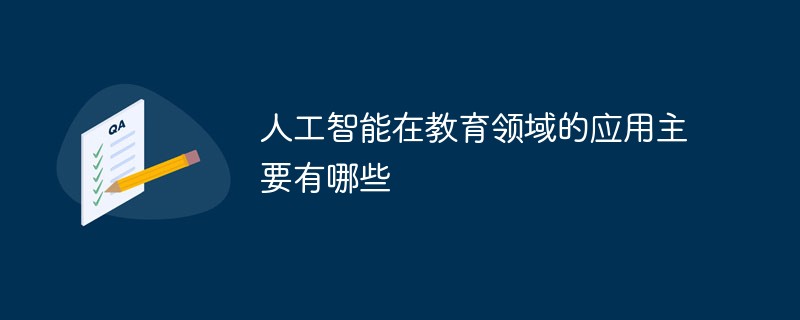 Technology peripherals
Technology peripherals AI
AI In-depth analysis of the working principles and characteristics of the Vision Transformer (VIT) model
In-depth analysis of the working principles and characteristics of the Vision Transformer (VIT) model
Vision Transformer (VIT) is a Transformer-based image classification model proposed by Google. Different from traditional CNN models, VIT represents images as sequences and learns the image structure by predicting the class label of the image. To achieve this, VIT divides the input image into multiple patches and concatenates the pixels in each patch through channels and then performs linear projection to achieve the desired input dimensions. Finally, each patch is flattened into a single vector, forming the input sequence. Through Transformer's self-attention mechanism, VIT is able to capture the relationship between different patches and perform effective feature extraction and classification prediction. This serialized image representation method brings new ideas and effects to computer vision tasks.
Vision Transformer models are widely used in image recognition tasks such as object detection, image segmentation, image classification and action recognition. In addition, it is suitable for generative modeling and multi-model tasks, including visual foundation, visual question answering and visual reasoning.
How does Vision Transformer classify images?
Before we delve into how Vision Transformers work, we must understand the basics of attention and multi-head attention in the original Transformer.
Transformer is a model that uses a mechanism called self-attention, which is neither CNN nor LSTM. It builds a Transformer model and significantly outperforms these methods.
The attention mechanism of the Transformer model uses three variables: Q (Query), K (Key) and V (Value). Simply put, it calculates the attention weight of a Query token and a Key token, and multiplies it by the Value associated with each Key. That is, the Transformer model calculates the association (attention weight) between Query token and Key token, and multiplies the Value associated with each Key.
Define Q, K, V to be calculated as a single head. In the multi-head attention mechanism, each head has its own projection matrix W_i^Q, W_i^K, W_i^V, They respectively compute attention weights using the feature values projected by these matrices.
The multi-head attention mechanism allows focusing on different parts of the sequence in a different way each time. This means:
The model can better capture positional information because each head will focus on a different part of the input. Their combination will provide a more powerful representation.
Each header will also capture different contextual information through uniquely associated words.
Now that we know the working mechanism of the Transformer model, let’s look back at the Vision Transformer model.
Vision Transformer is a model that applies Transformer to image classification tasks. It was proposed in October 2020. The model architecture is almost identical to the original Transformer, which allows images to be treated as input, just like natural language processing.
Vision Transformer model uses Transformer Encoder as the base model to extract features from images, and passes these processed features to the multi-layer perceptron (MLP) head model for classification. Since the calculation load of the basic model Transformer is already very large, the Vision Transformer decomposes the image into square blocks as a lightweight "windowing" attention mechanism to solve such problems.
The image is then converted into square patches, which are flattened and sent through a single feedforward layer to obtain a linear patch projection. To help classify bits, by concatenating learnable class embeddings with other patch projections.
In summary, these patch projections and position embeddings form a larger matrix that is quickly passed through the Transformer encoder. The output of the Transformer encoder is then sent to the multi-layer perceptron for image classification. The input features capture the essence of the image very well, making the classification task of the MLP head much simpler.
Performance Benchmark Comparison of ViT vs. ResNet vs. MobileNet
While ViT shows excellent potential in learning high-quality image features, it Worse in terms of performance and accuracy gains. The small improvement in accuracy does not justify ViT's inferior runtime.
Vision Transformer model related
- The fine-tuning code and the pre-trained Vision Transformer model are available on Google Research’s GitHub.
- Vision Transformer model is pre-trained on ImageNet and ImageNet-21k datasets.
- The Vision Transformer (ViT) model was introduced in a conference research paper titled "An Image is Worth 16*16 Words: Transformers for Image Recognition at Scale" published at ICLR 2021.
The above is the detailed content of In-depth analysis of the working principles and characteristics of the Vision Transformer (VIT) model. For more information, please follow other related articles on the PHP Chinese website!
 2023年机器学习的十大概念和技术Apr 04, 2023 pm 12:30 PM
2023年机器学习的十大概念和技术Apr 04, 2023 pm 12:30 PM机器学习是一个不断发展的学科,一直在创造新的想法和技术。本文罗列了2023年机器学习的十大概念和技术。 本文罗列了2023年机器学习的十大概念和技术。2023年机器学习的十大概念和技术是一个教计算机从数据中学习的过程,无需明确的编程。机器学习是一个不断发展的学科,一直在创造新的想法和技术。为了保持领先,数据科学家应该关注其中一些网站,以跟上最新的发展。这将有助于了解机器学习中的技术如何在实践中使用,并为自己的业务或工作领域中的可能应用提供想法。2023年机器学习的十大概念和技术:1. 深度神经网
 超参数优化比较之网格搜索、随机搜索和贝叶斯优化Apr 04, 2023 pm 12:05 PM
超参数优化比较之网格搜索、随机搜索和贝叶斯优化Apr 04, 2023 pm 12:05 PM本文将详细介绍用来提高机器学习效果的最常见的超参数优化方法。 译者 | 朱先忠审校 | 孙淑娟简介通常,在尝试改进机器学习模型时,人们首先想到的解决方案是添加更多的训练数据。额外的数据通常是有帮助(在某些情况下除外)的,但生成高质量的数据可能非常昂贵。通过使用现有数据获得最佳模型性能,超参数优化可以节省我们的时间和资源。顾名思义,超参数优化是为机器学习模型确定最佳超参数组合以满足优化函数(即,给定研究中的数据集,最大化模型的性能)的过程。换句话说,每个模型都会提供多个有关选项的调整“按钮
 人工智能自动获取知识和技能,实现自我完善的过程是什么Aug 24, 2022 am 11:57 AM
人工智能自动获取知识和技能,实现自我完善的过程是什么Aug 24, 2022 am 11:57 AM实现自我完善的过程是“机器学习”。机器学习是人工智能核心,是使计算机具有智能的根本途径;它使计算机能模拟人的学习行为,自动地通过学习来获取知识和技能,不断改善性能,实现自我完善。机器学习主要研究三方面问题:1、学习机理,人类获取知识、技能和抽象概念的天赋能力;2、学习方法,对生物学习机理进行简化的基础上,用计算的方法进行再现;3、学习系统,能够在一定程度上实现机器学习的系统。
 得益于OpenAI技术,微软必应的搜索流量超过谷歌Mar 31, 2023 pm 10:38 PM
得益于OpenAI技术,微软必应的搜索流量超过谷歌Mar 31, 2023 pm 10:38 PM截至3月20日的数据显示,自微软2月7日推出其人工智能版本以来,必应搜索引擎的页面访问量增加了15.8%,而Alphabet旗下的谷歌搜索引擎则下降了近1%。 3月23日消息,外媒报道称,分析公司Similarweb的数据显示,在整合了OpenAI的技术后,微软旗下的必应在页面访问量方面实现了更多的增长。截至3月20日的数据显示,自微软2月7日推出其人工智能版本以来,必应搜索引擎的页面访问量增加了15.8%,而Alphabet旗下的谷歌搜索引擎则下降了近1%。这些数据是微软在与谷歌争夺生
 荣耀的人工智能助手叫什么名字Sep 06, 2022 pm 03:31 PM
荣耀的人工智能助手叫什么名字Sep 06, 2022 pm 03:31 PM荣耀的人工智能助手叫“YOYO”,也即悠悠;YOYO除了能够实现语音操控等基本功能之外,还拥有智慧视觉、智慧识屏、情景智能、智慧搜索等功能,可以在系统设置页面中的智慧助手里进行相关的设置。
 人工智能在教育领域的应用主要有哪些Dec 14, 2020 pm 05:08 PM
人工智能在教育领域的应用主要有哪些Dec 14, 2020 pm 05:08 PM人工智能在教育领域的应用主要有个性化学习、虚拟导师、教育机器人和场景式教育。人工智能在教育领域的应用目前还处于早期探索阶段,但是潜力却是巨大的。
 30行Python代码就可以调用ChatGPT API总结论文的主要内容Apr 04, 2023 pm 12:05 PM
30行Python代码就可以调用ChatGPT API总结论文的主要内容Apr 04, 2023 pm 12:05 PM阅读论文可以说是我们的日常工作之一,论文的数量太多,我们如何快速阅读归纳呢?自从ChatGPT出现以后,有很多阅读论文的服务可以使用。其实使用ChatGPT API非常简单,我们只用30行python代码就可以在本地搭建一个自己的应用。 阅读论文可以说是我们的日常工作之一,论文的数量太多,我们如何快速阅读归纳呢?自从ChatGPT出现以后,有很多阅读论文的服务可以使用。其实使用ChatGPT API非常简单,我们只用30行python代码就可以在本地搭建一个自己的应用。使用 Python 和 C
 人工智能在生活中的应用有哪些Jul 20, 2022 pm 04:47 PM
人工智能在生活中的应用有哪些Jul 20, 2022 pm 04:47 PM人工智能在生活中的应用有:1、虚拟个人助理,使用者可通过声控、文字输入的方式,来完成一些日常生活的小事;2、语音评测,利用云计算技术,将自动口语评测服务放在云端,并开放API接口供客户远程使用;3、无人汽车,主要依靠车内的以计算机系统为主的智能驾驶仪来实现无人驾驶的目标;4、天气预测,通过手机GPRS系统,定位到用户所处的位置,在利用算法,对覆盖全国的雷达图进行数据分析并预测。


Hot AI Tools

Undresser.AI Undress
AI-powered app for creating realistic nude photos

AI Clothes Remover
Online AI tool for removing clothes from photos.

Undress AI Tool
Undress images for free

Clothoff.io
AI clothes remover

AI Hentai Generator
Generate AI Hentai for free.

Hot Article

Hot Tools

SublimeText3 English version
Recommended: Win version, supports code prompts!

DVWA
Damn Vulnerable Web App (DVWA) is a PHP/MySQL web application that is very vulnerable. Its main goals are to be an aid for security professionals to test their skills and tools in a legal environment, to help web developers better understand the process of securing web applications, and to help teachers/students teach/learn in a classroom environment Web application security. The goal of DVWA is to practice some of the most common web vulnerabilities through a simple and straightforward interface, with varying degrees of difficulty. Please note that this software

mPDF
mPDF is a PHP library that can generate PDF files from UTF-8 encoded HTML. The original author, Ian Back, wrote mPDF to output PDF files "on the fly" from his website and handle different languages. It is slower than original scripts like HTML2FPDF and produces larger files when using Unicode fonts, but supports CSS styles etc. and has a lot of enhancements. Supports almost all languages, including RTL (Arabic and Hebrew) and CJK (Chinese, Japanese and Korean). Supports nested block-level elements (such as P, DIV),

Notepad++7.3.1
Easy-to-use and free code editor

PhpStorm Mac version
The latest (2018.2.1) professional PHP integrated development tool






